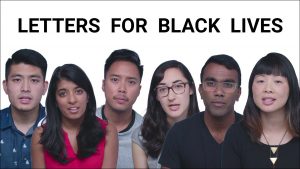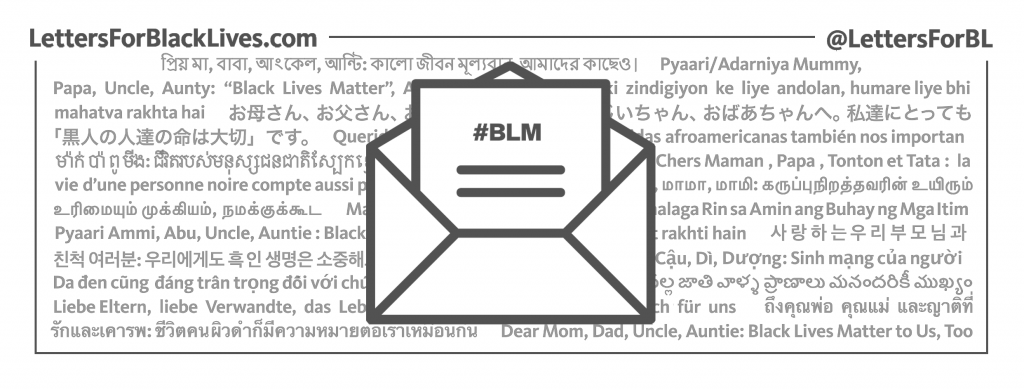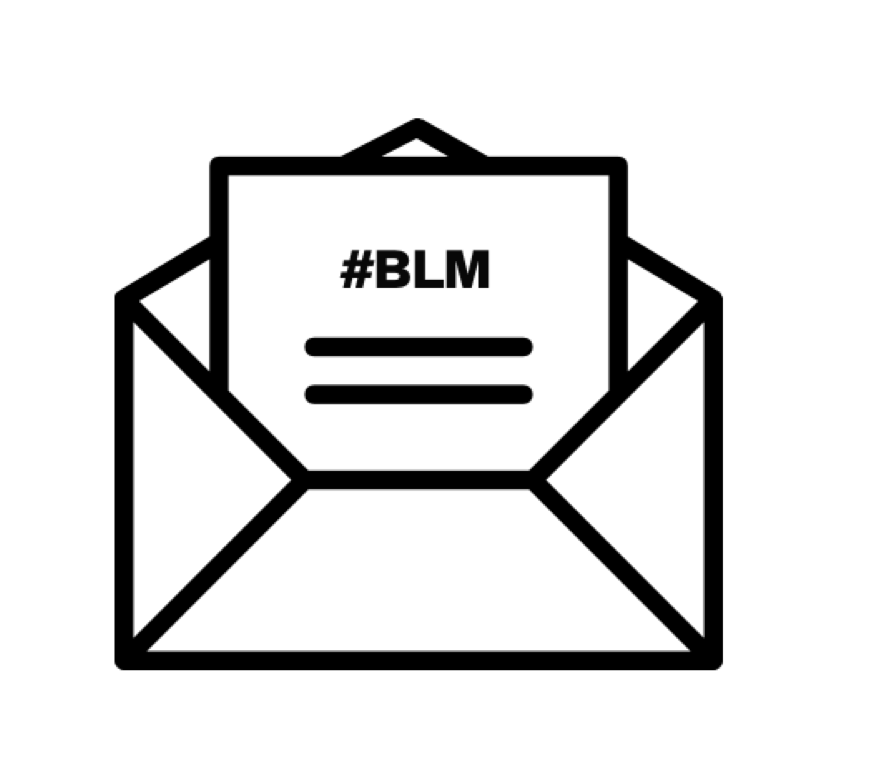“Let’s do this together”: an interview with Letters for Black Lives
Uncategorized“We need to talk,” begins the first letter from the organizers of “Letters for Black Lives,” a new writing project aimed at opening up intercultural and inter-generational dialogue about the Black Lives Matter movement. Letters for Black Lives began with a single, collectively written document from a group of Asian-American millennials to their parents about Black Lives Matter; in a week the project has expanded to over twenty languages and a variety of interpretations, working completely in the open under CC0.
Through open collaborative practices, the LFBL network has collectively written, adapted, and translated letters into over twenty languages in only eight days. Their work aims to compassionately facilitate crucial conversations within families about immigration, race, police violence, and anti-blackness. “Using public domain doesn’t just say ‘take this and make it your own’ to me, in a context like this, it also says ‘let’s do this together,'” writes B Cordelia Yu, an organizer with the project.
Letters for Black Lives chatted over their Slack channel about solidarity, remix culture, bottom-up organizing, community dialogue, free tooling, and how they’ve used maximum flexibility for maximum effect.
How did Letters for Black Lives come about? How have you effectively organized as a collective? What kinds of challenges have you faced as the scope has grown over the past week?
Gary Chou: This all came about because of Christina’s tweet. It was a lightning rod that drew all of the pent up energy that was simmering as a result of the events of the past few weeks.
Huy Hong: A core group of contributors emerged within ~6 hours [on a Google doc], who got looped into a private Twitter DM group of 11-12 (most of whom did not know Christina personally), that helped refine the focus of the letter. A Slack group emerged as soon as many of the core decisions were made, and as more folks got involved we need a broader, more public forum to discuss issues and direction. A list of free technology platforms we used to get all this done: Google Docs, Twitter, TinyLetter, Slack, Heroku, Medium, Facebook, GitHub, Gmail, YouTube, Dropbox.
Gary: Anytime you scale a network you run into communication challenges, but given the distributed model of work, people have been highly productive – together the network has peer produced 22+ translations, and the broader community has introduced their own letters (see the Latinx letter).
Someone just emailed us stating they’ve translated it into Lakota. It’s gone far and wide beyond our expectations, thanks to CC0.

Letters for Black Lives video screenshot, CC0
On your website, you write, “Every family has a different experience, and this is merely a resource for you to use. That’s why this letter, and its translations, are published with a CC0 Public Domain [waiver] — anyone can use any part of it, though we’d appreciate a linkback.”
Why did you decide to use Creative Commons, and why CC0 in particular?
Christina Xu: We knew early on that we wanted the letter to be a resource, which meant that people should be able to adapt it and customize it for their own purposes. Personally, I prefer to license everything I make at least CC-BY-NC (I was a copyfighter in college), so going Public Domain with this—especially since it was something many contributors worked on anonymously—just felt natural.
Huy: CC0 came up as we started to explore mediums (like video, audio) that tend to have a bit more litigation attached with regards to rights, and we felt that it was necessary to keep all interpretations/mediums of the letter as open as possible.
Gary: The first law of Asian America is that it’s not a monolith. We knew one letter couldn’t speak for all and that people would need to feel free to modify it as they so pleased in order to reflect their community, experiences and lens. Also, we wanted the letters to be part of a collective effort and in that sense it made sense that no one own it.
Huy: +1 on “no one owns it”, which is largely how we’ve approached the effort in large.
Gary: The letter we started with was meant to be a spark to encourage people to speak up who didn’t have the words, rather than a single letter to represent a community, and so it needed to exist as a portfolio of remixes in order to accurately reflect the community, and that lent itself well to CC.

Handwritten adaptation of letter by Karen Baker, CC0
Translation is a key part of this project. Have any of the translations surprised you in terms of both content and languages? How do you work with translations and new community members who want to build upon the already existing work? Who want to create new work?
Christina: The translations have been fascinating—many groups not only translated the letter verbatim, but went a step further and customized the letter for their own communities. As with everything else in this project, the translations are organized bottom-up—so, someone starts a document and adds it to the list, and then they/we recruit translators together.
B Cordelia: [As an aside], the section defining harassment in our code of conduct was lifted straight from another CC0 code of conduct.
The letters have received a lot of positive media attention, but what kind of response has the letter received from your communities and families so far? Have you heard feedback from other communities?
B Cordelia: My dad’s only response was “good job, keep going” and liking the Chinese translation on Facebook.

Behind the scenes at the San Francisco video shoot, CC0
Lea Yu: We’re in the very early stages of figuring out if and how this can go offline, and at the very least (as others have pointed out) we’ve started to share resources on offline efforts that each of us is already participating in. We have a lot of energy going in that direction, but we want to make sure this particular project is adding to the ongoing national and local conversations, rather than speaking in place of the groups who have already been actively working on these issues for years, if not decades.
Sarah Chen: This group helped me plug in with APIs for Black Lives Los Angeles for an ally action yesterday where we, White People 4 Black Lives, and other people of color encircled LAPD HQ with crime scene tape and held teach-ins with our community members before joining BLMLA members sitting in at LA City Hall.
Huy: We have a bunch of posts in the #highlights section of our Slack channel that you can check out.
What’s next for Letters for Black Lives? Where do you see the project going moving forward?
Christina: This week, we’re mobilizing around creating audio and video recordings of the letter in as many languages as possible. Written translation is also ongoing, for our letter as well as the Canadian version and the African immigrants versions.There are people working on other versions of the letter as well: #college and #people-of-faith, for example…
Because we’re a bottom up, decentralized group, it’s hard to say what people will be excited by & willing to put their energy into next. Personally, I’m excited by the idea of continuing to create resources in a variety of languages, as well as the maintenance of these digital spaces as places for people to connect.
B Cordelia: I think evergreen resources and having a place to for us to connect are what I hope will last.
Huy wrote that you used CC0 to make this letter as open as possible. Can you all tell me more about the power of open collaboration within this project and how you see as a vehicle for social change more generally?
B Cordelia: I feel like top-down organizing and holding onto intellectual property rights makes people territorial, which in a coalition of orgs means everyone is spending energy guarding their own instead of making the best damn thing we can.
Using public domain doesn’t just say ‘take this and make it your own’ to me, in a context like this, it also says ‘let’s do this together.
Huy: My general philosophy with getting things done properly, and quickly, is to give passionate/committed contributors immediate trust to do what they think is “right.” Given our narrow focus and the self-corrective nature of collaborative groups, we’ve been able to get a lot done in an absurdly short period of time.
Lee-Sean Huang: For me, the rationale with both the open organizing and open [waiver] was the only way to be representative, or at least respectful, to all stripes of diverse people and their experiences. An 800 word letter can’t speak for everyone, not even all Asians or all East Asian Americans, and it doesn’t claim to do so. By keeping the [waiver] and the governance/organizing as open as possible, folks can feel ownership and agency to fork and adapt as necessary.

Letters for Black Lives Banner, CC0
Posted 15 July 2016
